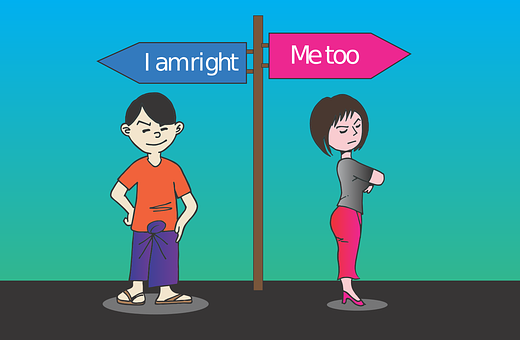“Cities have the capability of providing
something for everybody, only because, and only when, they are created by
everybody.”
― Jane
Jacobs
When we were children, a lot of our school essays on India started with one line. India lives in its villages. We rarely wrote about the India living in its cities. At the dawn of another decade, we realise that India is massively growing in its cities. People in large numbers are coming to cities with very valid reasons. It is not that the village story is over but a new and exciting city story is emerging and we must pay attention to that.
Growth and Promises
Without referring to extensive statistics, we know that India getting rapidly urbanised. According to most statistics, by 2050, half of India will be living in its cities and the future of India will be depending on how it tackles this urbanisation. There are a lot of reasons for this large scale urbanisation. Though Mahatma Gandhi dreamt an India living and prospering in its villages, somewhere along the way, the focus of the country shifted to its cities. We just could not build a village economy of sizeable scale which would have prevented massive migration of people to cities. There were fewer jobs and opportunities in villages and added to that infrastructure in villages was less promising. People flocked to cities in search of jobs and opportunities for their children. Even under extreme living conditions, they found that the city offered more hope. However, the tragedy was that the country was ill-prepared for such a huge inflow of people and there is a silent crisis we are witnessing in the majority of our cities amidst the hustle and bustle it presents.
I am sure that most of my readers are from cities and in one way or other, these cities offer us opportunities and excitement. Cities have more to offer in terms of leisure, entertainment and social life which every modern society crave. However, anyone who keenly observe the more organised, clean and less crowded western cities and many well organised Asian cities will feel that Indian cities have a long way to go. Of course, despite the obvious limitation on account of population pressures on every Indian city, we can do many things to improve their lot. Unlike the village life, city life calls for far more cooperation and collective responsibility among the residents as selfish individuals can ruin any city. The first step towards that objective is to have an emotional attachment to the cities we live and to understand the specific pains of each city.
The pain of our cities
As we have seen already, urbanisation in India happened too quickly and we realise it from the signs of fatigue, infrastructure crisis and declining quality of life in our cities. Anyone who has been living in any Indian city for the last 10 or 20 years will know that. Of course, there are more vehicles, more shopping malls, more flyovers and obviously more promises from the people who run our cities. But that does not complete the story. .From transportation to housing and from water availability to waste management we have a number of things to fix. Most of the building activities have become a nexus between politicians, contractors, and engineers which is a lethal combination that can bypass any building bylaw and urban regulation. The large scale violation of building by-laws has a direct bearing on the aesthetics and quality of life in the city. There is more to quality of life than the number of cars or air conditioners. In a way, in many cities, it is a co-living of urban splendour and urban squalor at the same time. Greater speed of internet connectivity or availability of online food services is no compensation for alarming levels of pollution or slow-moving traffic. Bangaloreans spends an average of four to five hours on the road daily commuting between office and home severely compromising his/her time for leisure and family. (more examples from Bangalore as I have been living there since 1999) The fact is that even a city like Bangalore which has one of the best weather, green cover, entrepreneurship and cosmopolitan culture in the country can be failed by extreme congestion on roads and poor waste management etc.
Another very disturbing trend of Indian cities is the way the city is split between rich and poor. Whether it is dwindling public spaces or use of roads for parking or excessive number of private cars on roads, our cities treat its poor and pedestrians shabbily. Nominal parking fees bring all private cars to the central business district and the poorly equipped public transport system in many cities forces people to opt for private vehicles choking the roads further. We must also consider the latest concept of gated communities which is the rich man’s way to shut himself from all that is unpleasant. This also makes him less interested in the wholeness of the city. Only when a city has more spaces which are accessed by the poor and rich alike, the city improves as a whole.
In the case of waste management, we find that our cities are being pushed to the wall. In future, trash management will be the biggest challenge any city will be facing. As we have seen already, there is no other way to tackle this major problem other than segregating the waste at source and more decentralised processing of the waste. There needs to be a major focus on recycling of waste and water. Progress means more consumption and consumption increases waste. Whether it is plastic or packing materials our lifestyle generate trash in tons. Sociologist Zygmunt Bauman called waste “ the midwife of all creation and its formidable obstacle “. Since waste management is an issue affecting all cities, there is an urgent need to share the best practices and learn from each other.
Made of flesh , not concrete
The improvement of our cities has to begin from a deep desire for the same from all its stakeholders. Institutions such as the Indian Institute for Human Settlements(IIHS), which has come up in Bangalore is an answer to the desire for dedicated places of learning for urban studies and transformation. No city can be built by only a few and as we have seen in the quote at the beginning, cities have to be built by everyone. Whether by paying property taxes promptly or helping in waste segregation or in saving water or behaving well in the road, cities flourish when everyone pitches in with their effort selflessly. The land use in our city may need a major overhaul. At present it is highly skewed in favour of the rich and one will find that the same has resulted in higher cost of accommodation which in turn make thousands homeless. In places like Bangalore, the fascination for independent houses in large plots in and around the central business district has resulted in lesser availability of land for optimum housing plans or vertical growth. Also as Gautam Bhatia, one of India’s renowned architect observed once, the most valuable real estate of our cities has been appropriated by the rich for private profit. Once he suggested that had the Taj Hotel in Mumbai (near Gateway of India ) been lifted up a few floors, it would have opened a seaside space for public use and earned the city’s eternal gratitude. Instead, Mumbai’s most valuable public space near the sea is reserved for private profit. As Bhatia says, luxury for the few needs to be weighed against the architectural benefits they provide for the city. The crux of the matter is that more imaginative land use is a must to plan the city for all its residents.
One major reform required will be the way the city treats its marginalised sections such as street vendors, sanitation workers, construction workers and housemaids. Does the city know how they live, how they commute or how affordable is the city for them? It’s a fact that the city can’t be run without them. In such a scenario, we have a moral duty to ensure a decent life for them also. Take, for example, the hazardous conditions in which sanitation workers do their job. You will find a huge percentage of employees appointed on compassionate grounds in Bangalore city corporation following the premature death of their parents. Along with knowing people who make the city work, we must also know about the materials which come to the city. From where comes our water, food and where the waste go finally? An increased knowledge of such “material intelligence” is a must to make everyone accountable for what one uses and disposes of. Only such an understanding will promote more judicious and responsible use of everything. It was cities which gave us the renaissance or industrial revolution and even Information revolution is powered by new ideas from our cities. They have the potential to offer everyone a chance to blossom and realise their potential. For all that to happen, as Edward Glaeser tells in “ Triumph of the City, we must free ourselves from our tendency to see cities as their buildings, and remember that the real city is made of flesh, not concrete. The advantages of being close to other humans are just too great. Our culture, our prosperity and our freedom are all ultimately gifts of people living, working and thinking together –the ultimate triumph of the city.







2 Comments
Balaji
January 15, 2020 at 11:47 amMy takeaway from the post- Only when a city has more spaces which are accessed by the poor and rich alike, the city improves as a whole.- in Goa most public places/utilities are equally accessible by everyone
Boby George
January 18, 2020 at 7:20 pmYes man. Unless a city exists for all it collapses slowly.